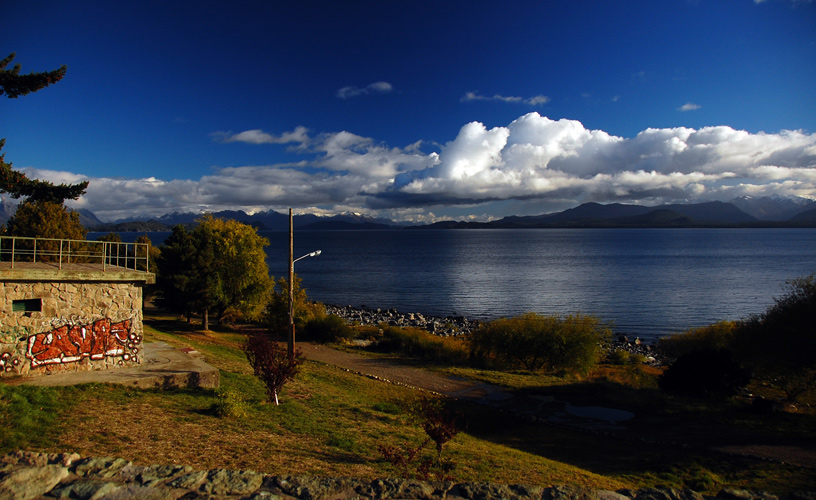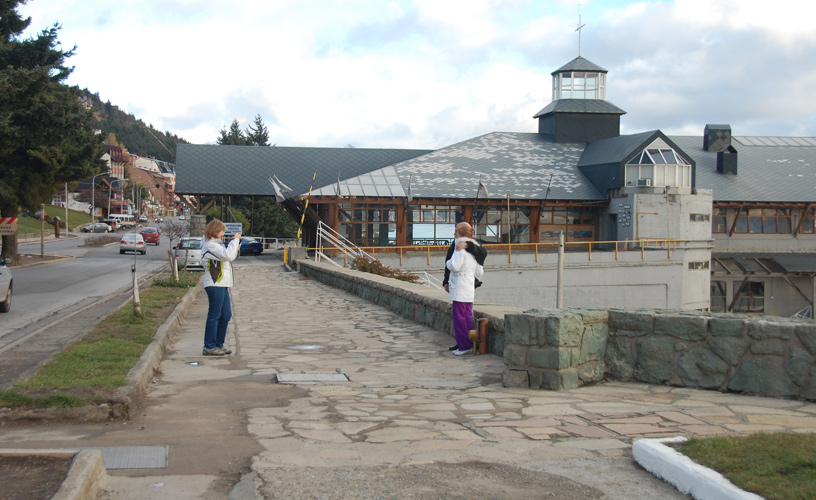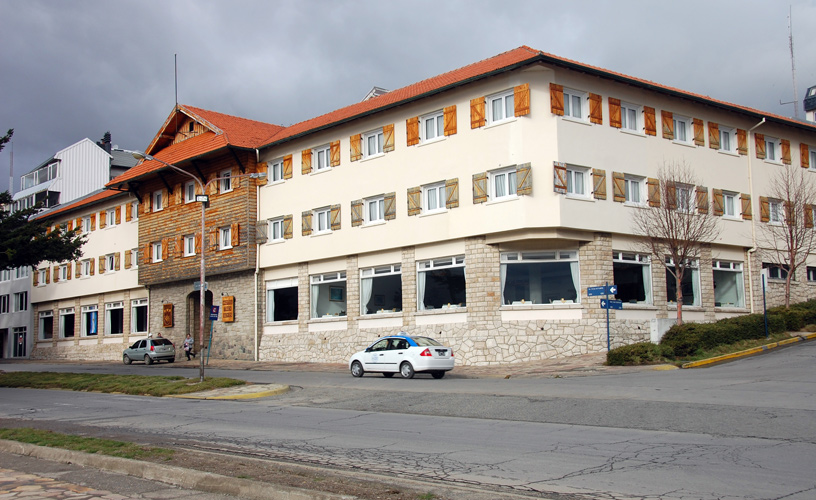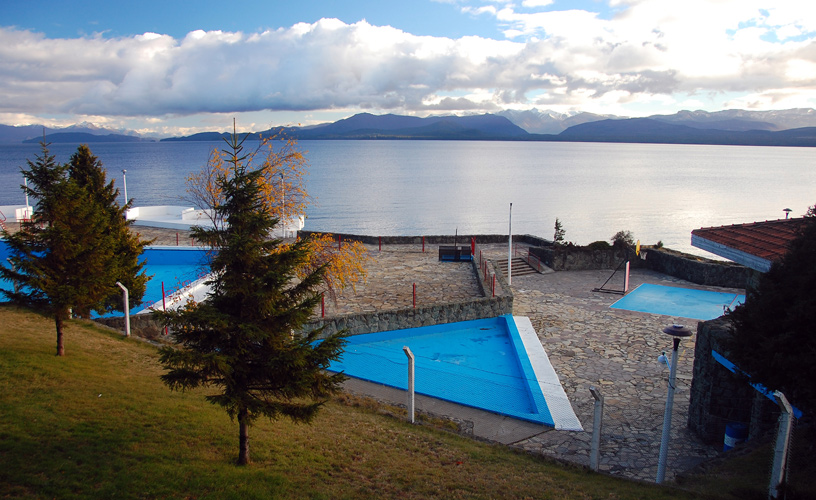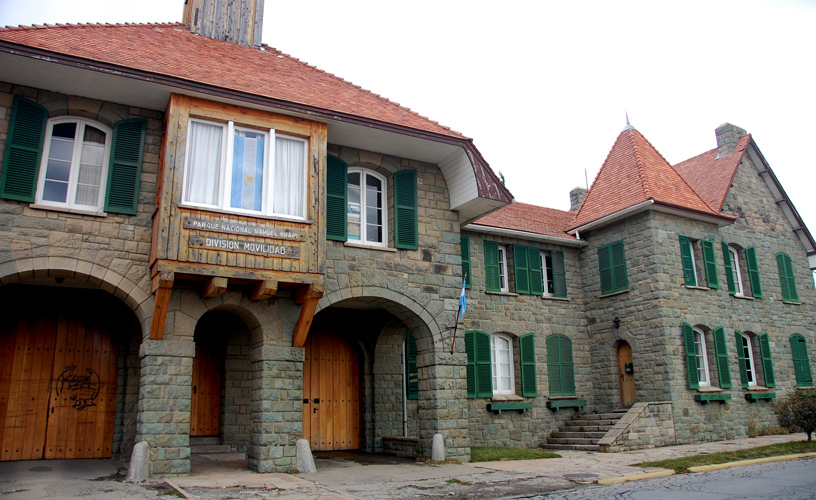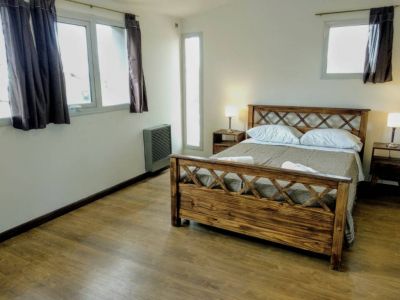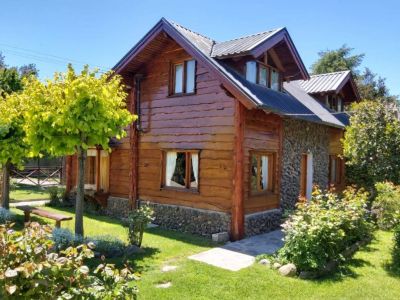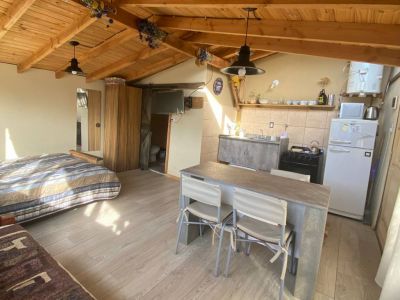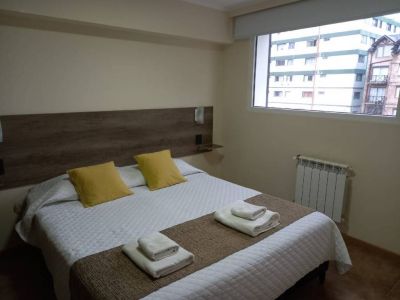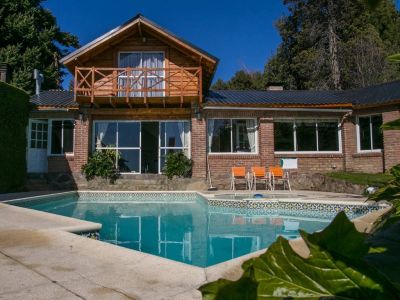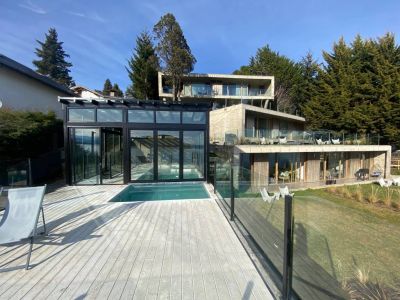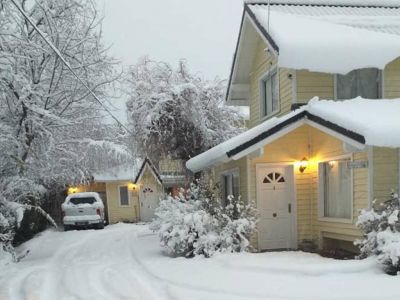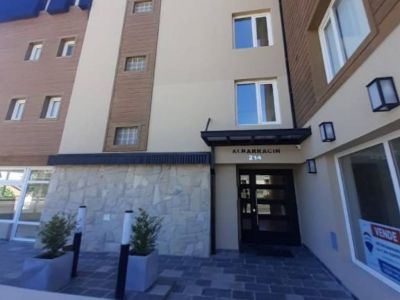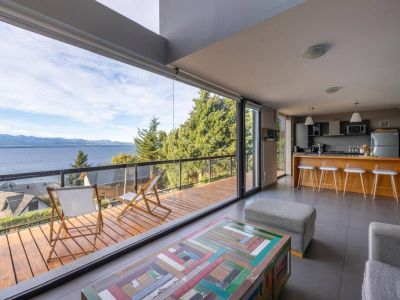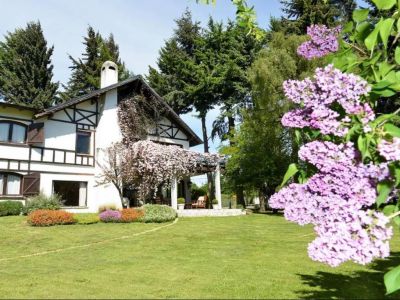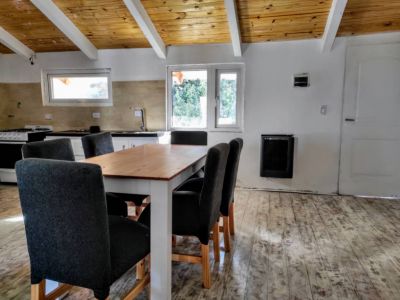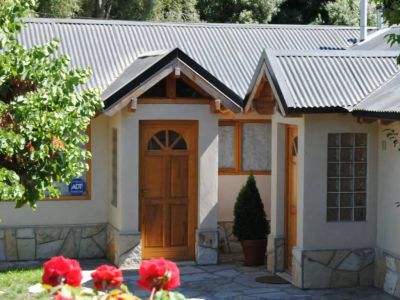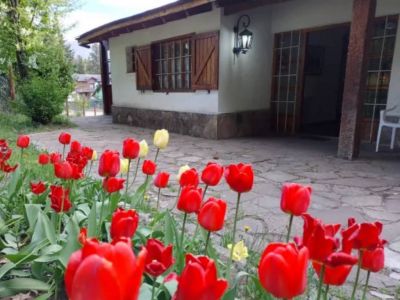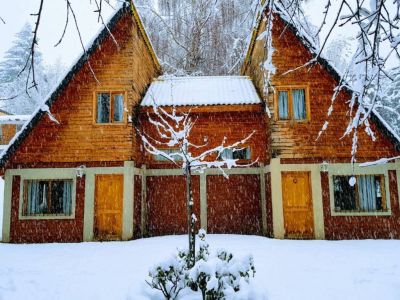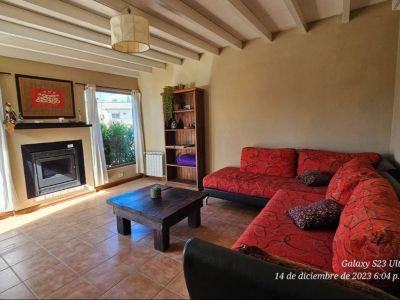We were reaching San Carlos de Bariloche at night in our own car and were impressed by the semicircle of lights ahead of us resting on Lake Nahuel Huapi. The waterfront, parallel to 12 de Octubre Avenue, joins it to Bustillo Avenue and has a life of its own. It was tempting us to discover it in the daylight.
The next day at sunset, after touring around the emblematic Civic Center once again, we got ready to go for a walk along the waterfront from that location to its junction with Route 237 and the Ñireco River. It was the same stretch we had previously covered by car.
From the steps, we spotted the so-called “sleepy giant”: Port San Carlos. Its huge black roof shelters a commercial gallery. Nevertheless, its wharf is no longer used for its original purposes.
Bordering Lake Nahuel Huapi
During our tour, we came across a sequence of small squares, recreation beaches and buildings that would add up color to the scene. To our left, the lake escorted us at all times.
A large wide stone wall separated the beach from the sidewalk. It followed the same architectural guidelines as many constructions in the area and we noticed it featured different heights on the side facing the shore.
The grand windows of old and representative Hotel Tres Reyes, a few meters away from the Civic Center, would be present in almost all the other buildings along the shore. Both hotels and apartments had the privilege of enjoying a view of the lake avoiding its inclemency.
The landscaped area surrounding Our Lady of the Nahuel Huapi Cathedral was the neatest. We resolved to make a stop and take advantage of its gullies with grass to have a rest. In addition to some religious images and sculptures, we were attracted by its giant conifers.
With our eyes on the lake, the mountains in the background would hold the scenery and make us forget the presence of the city and its noise. The hustle and bustle of vehicles along the avenue brought us back to reality.
Can the wind change attitude during this stroll? The answer is “yes”. We experienced it ourselves. The winds changed suddenly and we were pushed by a strong western breeze during the last few blocks.
All along the tour, we noticed there were almost no free spaces and that very modern buildings co-exist with ancient houses where glass prevails over any other material.
Back in 1930...
The Bustillo style was present in several buildings we found along the lakeshore. The cathedral, the Dirección de Movilidad de Parques Nacionales building and the Departamento Provincial de Aguas building displayed their classic construction. Stone foundations, large balconies and openings made with local wood were the icons of those days.
Towards the end of the ride, a neighborhood of simple houses and the first high school in Bariloche showed us a settlement that is part of the history of the city. It has the advantage of having its own beach.
We were lost in thought: it was good to admire the waterfront lights at night being reflected on the lake waters. We had blocked ourselves out from the speedy and noisy traffic on the avenue.
Mónica Pons
Eduardo Epifanio
